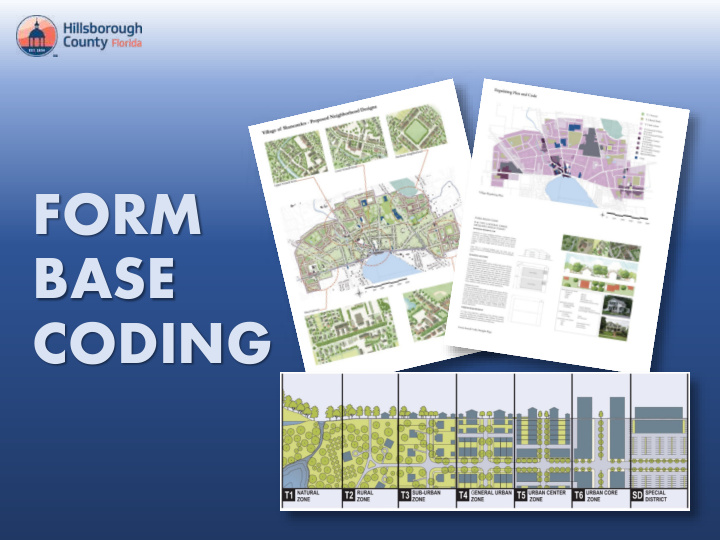



FORM BASE CODING
What are Form Base Codes? A form-based code (FBC) is a way to regulate development that controls building form first and building use second, with the purpose of achieving a particular type of “place” or built environment based on a community vision. plannersweb.com
Conventional Zoning vs. Form-based Code Conventional zoning has traditionally focused on the segregation of land-use types, permissible property uses, and the control of development intensity through simple numerical parameters (e.g., FAR, dwellings per acre, height limits, setbacks, parking ratios). Design guidelines may be used to supplement conventional zoning but are typically advisory. Development quality, scale and uses allowed in a given area is dependent on a community’s planning objectives which are translated through local land use regulations including zoning, subdivision, building, and public infrastructure standards. However, there is often a disconnect between the community’s vision and land use regulations. Harriman.com
Conventional Zoning vs. Form-based Code Form-Base Code addresses not only development but the relationship between public and private spaces such as the interaction between streets, blocks, and buildings in terms of form, scale and massing, and the use of frontage areas. FBC creates a predictable public realm by including specific standards for the design of streets and open spaces, and focusing primarily on the physical form of development, with a lesser focus on building use than conventional zoning regulations. FBC typically provides for an appropriate mix of uses and encourages strong relationships between a building and its context, including public spaces and surrounding buildings. Often these standards are presented in both diagrams and words to clearly illustrate the design and development objectives for a given district. The building form and public space standards are assigned to streets and blocks in a regulating plan. Harriman.com
Current Special Districts in Hillsborough County Implementing Some Elements of Form Base Coding: PART 3.10.00 Citrus Park Village Development Standards PART 3.12.00 Brandon Main Street Development Standards PART 3.13.00 University Community Area Development Regulations PART 3.14.00 State Road 60 (Brandon Boulevard) Overlay District PART 3.15.00 Hillsborough Avenue Overlay District PART 3.17.00 Ruskin Town Center Development Regulations PART 3.19.00 Riverview Downtown District – Development Regulations PART 3.20.00 Riverview Downtown – Uptown Overlay District
HC Special Districts: Lessons Learned • Anticipated density should be understood prior to zoning implementation; • Preservation areas, flood elevation and other elements that can influence regulating plan design and/or form should be understood prior to creating regulating plan; • Greenfield development: Area planned for town center support services must be preserved while demand for services is created; • An absence of regulating plans makes it difficult to ensure the vision of the district is accomplished.
Recommend
More recommend